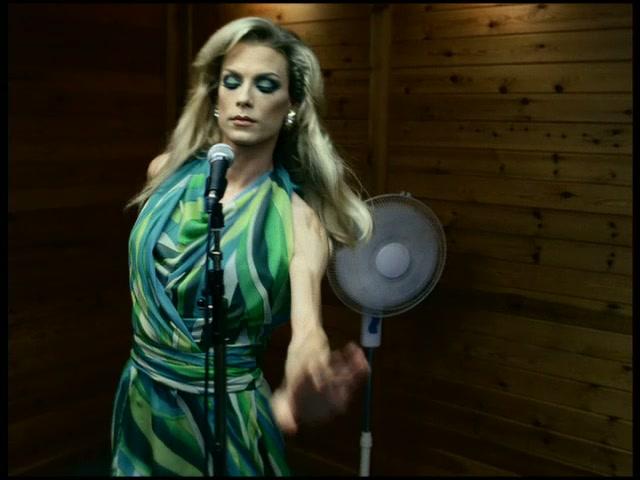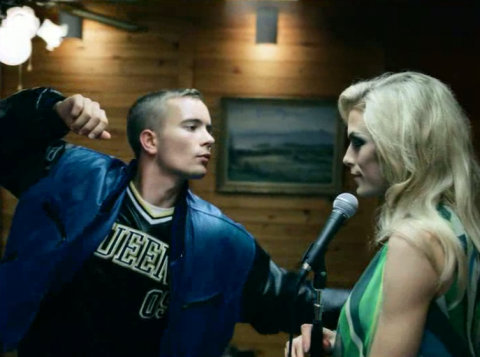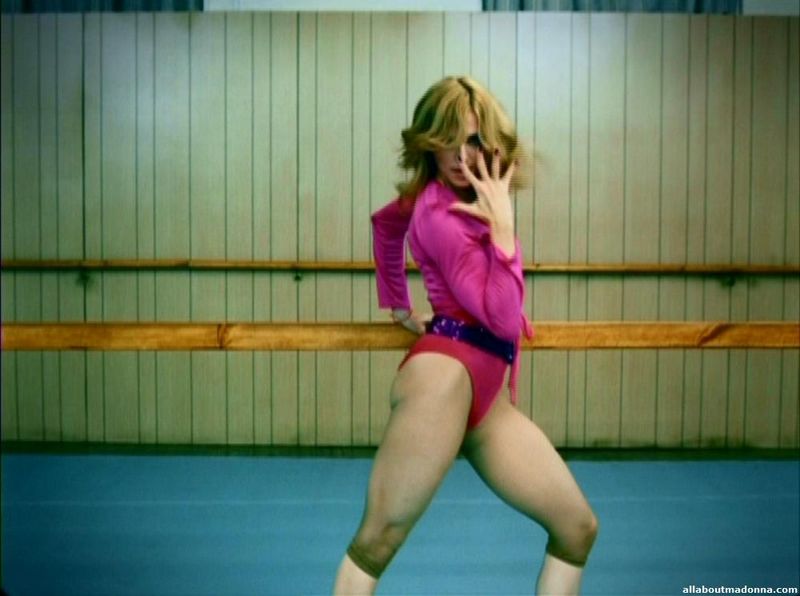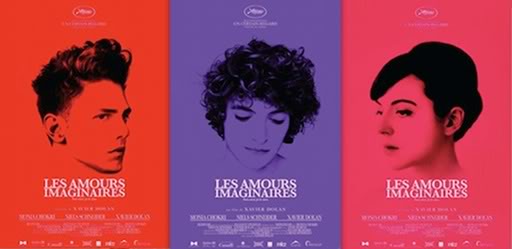Johan Renck’s music video for The Knife’s “Pass This On” throws us into one of the most uncomfortable football award banquets ever, complete with three of my favourite things: drag queens, The Knife’s infectious song, and awkward straight boy dancing.
Renck works to build an aesthetics of discomfort here. The film finds the painful, rumpus room décor, the apathetic-to-the-point-of-aggressive blank faces of the audience, the drag queen’s Xanadu-esque outfit, and the lyrics she sings about preying on another girl’s brother (“I’m in love with your brother / What’s his name? / I thought I’d come by to see him again”). Terribly awkward. All of it. Made more awkward, not less, with the plethora of awkward dances the drag queen’s performance inspires. Most striking visually is the young blond man’s earnest courtship dance: to desire in Renck’s uncomfortable world is to be beauteous and a fool at the same time.
This aesthetics of discomfort recurs in Renck’s other works and is particularly similar in his video for Madonna’s “Hung Up.”
The lighting has all the florescent ambiance of a coroner’s autopsy theatre and the room’s pale blue floor and fake wood paneling scream sad basement from the ‘70s where sad things will happen. Madonna’s outfit and hair might have been designed and styled by the same perversely retro stylists who worked on the drag queen in “Pass This On.”
The difference between the two videos is that Renck permits Madonna to escape to beauty in the segments where she dances with beautiful young dancers in a night club (though Renck throws her back on the floor in the basement in the very last shot). For “Pass This On,” however, Renck doesn’t let the footballers or the drag queen find the exits in their rumpus room hell.
Through the first half of “Pass This On,” much of the discomfort comes from the juxtaposition of a drag queen performer with an unsympathetic audience. This fancy fish out of water tale then courts our expectations that, washed up here, the fish is in danger. Who booked her for this event and how badly is this going to end?
I am all for dance as the panacea to most social conflicts, but the film nicely resists that. Certainly, the men get up and dance instead of resorting to violence or panic at the sight of the drag queen, but the aesthetic of discomfort does not ease, helped in part by that glorious bad straight boy dancing, but ultimately secured by the film’s resistance to Broadway show tune resolutions: the last shot is of a young woman watching all the dancing footballers, the old men, and the drag queen with the same apathy the chorus of faces showed at the beginning. She is immune to this panacea. She won’t let this song and dance go full flash mob. Renck won’t let the film escape the aesthetics of discomfort.
Renck’s penchant for discomfort is perhaps at its most extreme in his “Mobile Movies: Self Portrait,” where he chronicles a solitary evening in a sparse apartment.
Sure, he pees on the toilet seat, but he does clean it up. This painful visual honesty is most realized in the low shot which starts with his naked butt and then holds on him as he awkwardly puts on his underwear and socks. Throughout this he angles himself towards the left of the screen and this suggests the presence of a mirror off screen. The self-consciousness, the awkwardness of him dressing, are vulnerable and disarming. We see him seeing himself, and we wonder what he sees. Again with the aesthetics of discomfort, the ambivalent desiring gaze.
Terribly talented Canadian director Xavier Dolan chose The Knife’s song for a sort of dervish subtext in his gorgeous second film Les Amours Imaginaires (a title terribly translated by –I am assuming – the film distribution company as Heartbeats).
The clip is in French, but the translation of their dialogue appears below the video frame. The awkwardness from Renck’s video is mirrored here as son and mother sexy dance at his birthday party while his two would-be suitors watch on. There’s a similar thread of discomfort running through the rest of Dolan’s film, too, in the awkward documentary footage where random eccentric characters discuss their most obsessive loves and in the mise en scene that frames lovers talking in bed like awkward portraits. Desire, for Dolan’s film, is awkward and uncomfortable, built on unresolvable distances.
Reading this sense of desire and awkwardness back to Renck’s music videos, we can perhaps see that desire, too, plays a part in the music video worlds orbiting the drag queen and Madonna. The aesthetic of discomfort is not just about wanting to get away from anxiety provoking interiors and awkward social situations. There is something desirable about these worlds, too. And even something desirable about the discomfort itself. This, it seems, is at the core of Renck’s films. This discomforting desire that the drag queen passes on to the young man, that the young man passes on to the other men, that is held in the gaze of the young woman at the end of the video. Pass it on.
— R W Gray




A parable of desire and strangeness. What I like, over and over again, about the movies you present is how the artists move the goalposts. Suddenly the playing field of life (the work) is distinctly other and I have lost my bearings. The man/woman is presented (positioned, literally) as the OBJECT OF DESIRE. She bears the signs of EROS. Her strangeness rouses the depressingly ordinary people from the torpor of existence into a compulsive & ecstatic dance. The girl at the table gazes. In this movie, all communication is through the gaze. Desire is in the glance. But oddly yes desire is inspired by the superficial signs of eros, beauty, and the dance remains solitary. No one touches. Fascinating.
Yes, fascinating stuff! Thanks for your insightful commentary, Rob!
Fantastic mini-essay. Just what I wanted to find when I performed a search on the music video (Les amours imaginaires led me to the song).